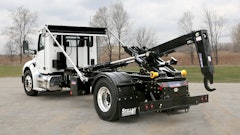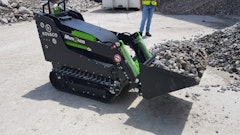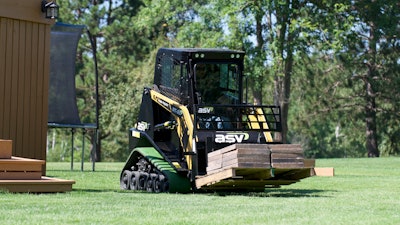
There’s no question that compact track loaders are one of a jobsite’s most versatile tools. The right selection of attachments is one aspect that makes the possible applications nearly endless. But the size of the machine can be another gateway to new business for contractors.
Many contractors use primarily mid-size compact track loaders, but there are big benefits to rounding out a fleet with the industry’s smallest sit-in track loaders. The equipment opens new job opportunities and provides a solution for the trend away from walk-behind and stand-on loaders toward safer equipment that can still deliver high productivity. This type of equipment allows contractors to better train their operators and improve safety.
New Market Opportunities
The size of these small sit-in compact track loaders helps make them a fit for a wide variety of applications, including those with size restrictions where larger equipment is too bulky. Walk-behind and stand-on loaders are popular for similar reasons, but are flawed with safety, comfort and productivity limitations. Contractors can use small sit-in compact track loaders as a similarly priced alternative.
 The smallest sit-in compact track loaders’ small size and low weight of about 3,600 pounds or less make them generally easy to transport with a 1/2-ton pickup truck and standard trailer, such as the one pictured hereASV Holdings Inc.
The smallest sit-in compact track loaders’ small size and low weight of about 3,600 pounds or less make them generally easy to transport with a 1/2-ton pickup truck and standard trailer, such as the one pictured hereASV Holdings Inc.
Small residential or backyard projects don’t necessarily need a huge machine. Landscape contractors can use a small compact track loader as an economical choice that is faster than doing the work manually and safer than using a walk-behind or stand-on loader. This could include stump removal and backyard landscaping projects such as installing a new garden, reshaping, or installing a retaining wall.
As contractors know, new housing developments are often built with structures very close together, providing little leeway for moving equipment between houses and into backyards. Smaller equipment can often fit through those tight spaces and can mean the difference between driving through the fence gate and removing a portion of the fence to accommodate the machine.
These small machines are also useful for finishing work, such as trenching for wiring and piping. Contractors can take advantage of equipment heights as low as 6 feet to work below jacked up houses for adding additions.
For the winter months, small sit-in compact track loaders excel at clearing snow in tight areas such as alleyways, small parking lots, driveways or sidewalks. The loaders not only fit in these areas, they provide more maneuverability, speeding up the job and posing less risk of property damage. In addition, some manufacturers offer compact track loaders with excellent flotation on snow, ice and slush, providing much better performance than most other tracks on the market. Operators will be thankful, as well, if the equipment has a heated cab.
Landscape contractors should look for small sit-in compact track loaders with low ground pressures for minimized turf damage. Some manufacturers offer unique undercarriages that allow lower pressures than anything else on the market. Because they have a shorter track base, walk-behind and stand-on loaders generally have 25% higher ground pressure, usually starting at 4 psi compared to 3.1 from some small sit-in compact track loaders. That means less risk of a torn up lawn and better flotation on soft surfaces and mud when operating a small sit-in compact track loader.
Safer, Easy-to-Use Equipment
Contractors know there’s always a risk when new employees operate equipment, so there are significant benefits to machinery that is safer and easy to use.
 Another benefit of small sit-in compact track loaders is their usability. The size of the machines can make them less intimidating to new operators, and they are easier to operate and learn for the same reason. In this photo, a small sit-in compact track loader hauls a bucket of material
Another benefit of small sit-in compact track loaders is their usability. The size of the machines can make them less intimidating to new operators, and they are easier to operate and learn for the same reason. In this photo, a small sit-in compact track loader hauls a bucket of material
Another benefit of small sit-in compact track loaders is their usability. The size of the machines can make them less intimidating to new operators, and they are easier to operate and learn for the same reason. This is especially true for equipment with standard joystick controls rather than dual-lever foot or H-Pattern controls. For an experienced operator, these features offer greater productivity. In addition, some of these compact track loaders feature 360 degree visibility so it’s easy to see in all directions, improving safety and ease of use.
Many of the same features that make a compact track loader safer than a walk-behind or stand-on loader also mean more comfort. Sitting on a padded seat means less fatigue on a long work day, and a pressurized cab outfitted with HVAC and a radio improves the overall experience. There’s also the comfort of familiarity. Walk-behind and stand-on loaders often have different control systems from manufacturer to manufacturer, while a small sit-in compact track loader has controls familiar to anyone who’s operated a larger unit.
The undercarriage can also contribute to operator comfort. Walk-behind and stand-on loaders generally have little to no suspension, meaning every bump is transferred to the operator and the machine. Certain small compact track loaders feature independent torsion axles and a flexible track that contribute to more comfort and less wear on the machine, as well as less material loss from the bucket caused by bumps.
Save on Maintenance
Ease of service can mean a faster ROI and lower total cost of ownership. Many small sit-in compact track loaders are easier to service than their larger counterparts thanks to ground-level access.
 Many contractors use primarily mid-size compact track loaders, but there are big benefits to rounding out a fleet with the industry’s smallest sit-in track loaders. Here, a small sit-in compact track loader easily sits within a residential garage door.ASV Holdings Inc.
Many contractors use primarily mid-size compact track loaders, but there are big benefits to rounding out a fleet with the industry’s smallest sit-in track loaders. Here, a small sit-in compact track loader easily sits within a residential garage door.ASV Holdings Inc.
When track change-out is necessary, the small size of the loader can make it simple to change a track with just one person. This is especially true if the equipment features an all-rubber track, which is lighter than steel-embedded versions. General service items are close to ground level, speeding up the process, and can be serviced with normal-size tools.
Some models require no exhaust aftertreatment, saving the time that would need to be spent maintaining a larger model with the requirement. For even easier maintenance, contractors should look for models with a large rear-tilting hood providing easy access to all maintenance points, including filters, oil and fuel tanks, reservoirs, hydraulic and water separator drains, and the battery. Easy loader valve access is another plus. Another feature to watch for is standard metal-face seals on the front and back to ensure the drive hubs don’t require maintenance for the life of the machine.
Round Out Your Fleet
Many jobs call for a mid-sized compact track loader or skid steer, but having smaller sit-in models on hand can mean big benefits for a landscape contractor. From new markets and high versatility to excellent uptime and safety, the industry’s smallest compact track loaders may bring in business contractors didn’t know they were missing.

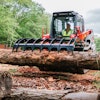


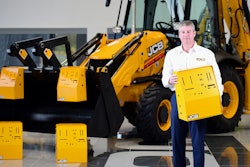
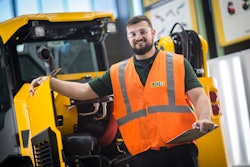
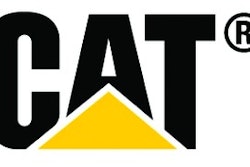

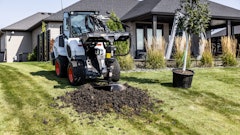
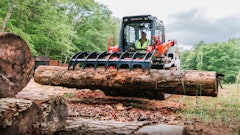
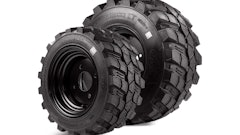
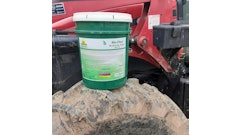


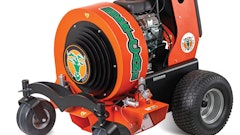

![Doosan Bobcat Wacker Neuson Stack 2ec Js Pb V6e[1]](https://img.greenindustrypros.com/mindful/acbm/workspaces/default/uploads/2025/12/doosan-bobcat-wacker-neuson-stack2ecjspbv6e1.CPyyz8ubHn.png?ar=16%3A9&auto=format%2Ccompress&bg=fff&fill-color=fff&fit=fill&h=135&q=70&w=240)

